ACCEPTED FILE TYPES
JPG, PNG, TIF, WEBP, GIF, PDF, AI, EPS, SVG
For best results, vector images (.pdf, .ai, .eps, .svg) are
preferred, as they generally offer more editability in
the event that a submission needs to be modified.
Please reach out via chat or email if you have issues
submitting your artwork.
IMAGE RESOLUTION
Non-Vector file resolution should be at least 300 PPI
(pixels per inch). If the PPI of an image is not known,
we advise submitting the largest, clearest image that
can be provided. Blurry or pixelated submissions
may suffer a loss in quality when being processed or
may not be able to be processed at all.
SIMPLICITY IS KEY!
Designs that are composed of bold, simple shapes
with minimum thin linework or sharp angles are
ideal for use on our molds and with the often
temperamental mediums that these molds interact
with.
Designs like simple sports logos, logo marks with
solid (filled in) shapes, and single/double letter
treatments present the best on our products, and
typically do not need a lot of modification for use.
AVOID THESE COMMON ISSUES
There are a few common design elements that
customers should try to avoid if they want to
minimize the chance of alterations being needed in
order to make a submission work with our products.
Text-centric designs - Text can be difficult to
replicate if there’s a lot of it in a given submission, if
it's very small, or if it is set in a problematic type
style. Submissions should stick to 5-8 characters per
line of text (this varies by product and type style
used) and be set in a bold, “block” style font.
Detailed Line Work - Fine details should be kept to a
minimum. Distressed/grungy textures or edges, thin
or intricate linework, and lines/shapes that
terminate at very fine points will likely need
alteration or to be removed. Submissions should use
large, solid elements/shapes that have clear spacing
from other elements in the design.
Incongruous Layouts - The overall shape of a
submission should roughly match the shape of the
imprint area on the product being ordered. For
example, with a large ice cube tray, which has a
square imprint area, the design should generally be
square in terms of layout, which would allow us to
maximize its size and capture the most detail. A
rectangular design would have to be made much
smaller, in comparison, to fit in the same space,
which can lead to alterations or rejection.
SORRY, NO PHOTOS!
We are not able to process photographs or images
that utilize a high degree of photorealism.
Submissions of this kind will likely be rejected and
we will ask for a replacement to be provided. Instead
of submitting a photograph of a person, animal, or
place, we recommend that clients try to think about
how they can represent or allude to their subject by
using a simple illustration, clipart, word or phrase,
etc.
PRODUCTION CONSTRAINTS
Minimum line weight: 1 mm
Minimum size of negative spaces: 1.75 mm
Minimum angle threshold: 35 degrees

